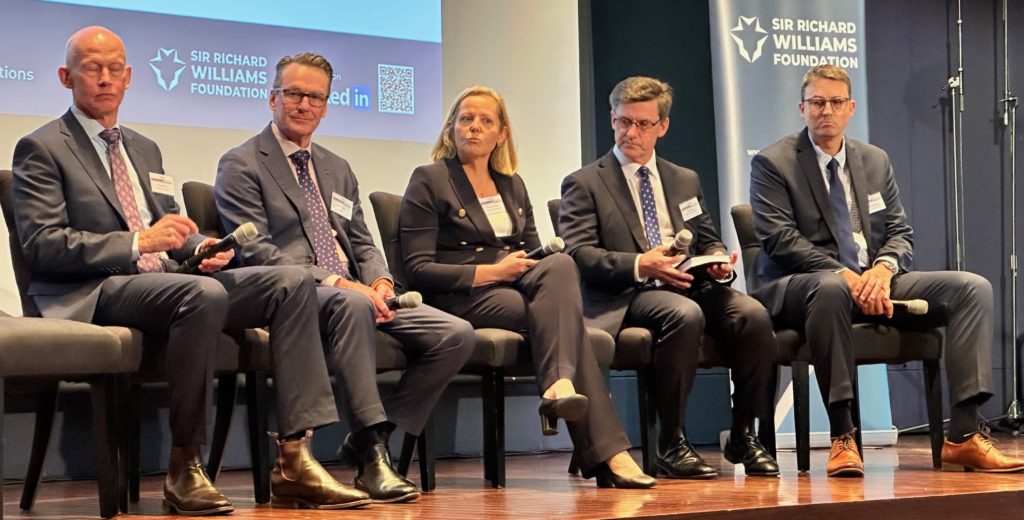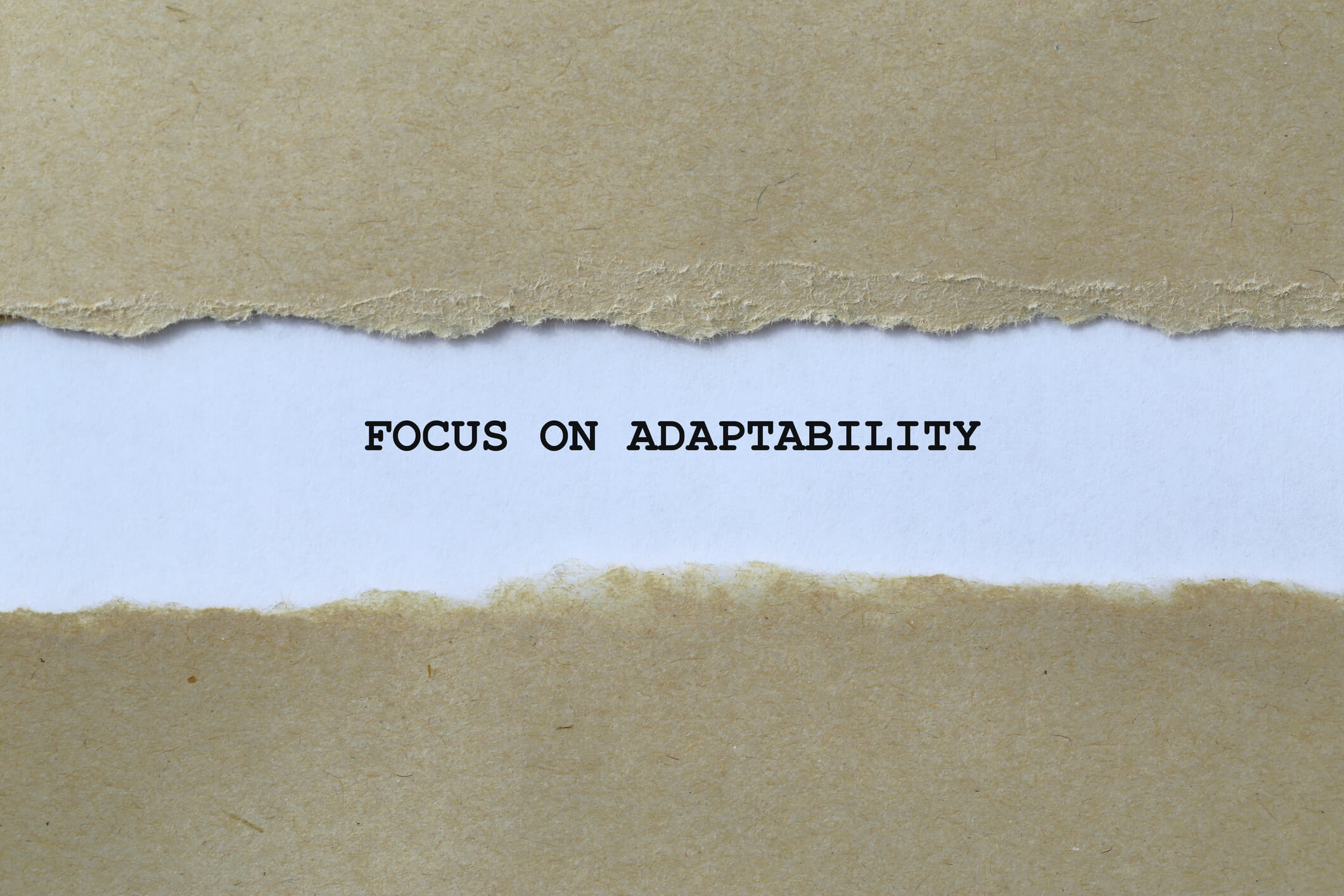The Need to Speed Delivery for the Ready Force and Enabling a More Cost-Effective Future Force
The second panel during the Sir Richard Williams seminar held on May 22, 2025 was composed of members of the Australian defence industry and was chaired by Katherine Ziesing, Sir Richard Williams Foundation. She posed questions throughout and drove a more integrated discussion than would have occurred otherwise.
The members of the panel were as follows:
- Kendell Kuczma, Lockheed Martin
- Nick Leake, Optus
- AVM (Retr) Robert Denney, Northrop Grumman Corporation
- Bradley Thompson, Phantom Works., Australia, Boeing
- Jim Gardner, Raytheon

The panel painted a picture of procurement processes that are expensive for both industry and government, while failing to deliver the rapid capability development that contemporary threats require.
The panel’s most striking moment came when moderator Katherine Ziesing asked for a show of hands from audience members who had written responses to defence tenders. Nearly every hand went up. When asked who thought it was a “brilliant experience,” every hand went down.
“We think it’s hard to write, but how do you go from one to 10 [tenders] and actually do the evaluation?” asked Kendall Kuczma, Lockheed Martin’s program director for Australia and New Zealand. “That’s hard work… let’s try and make it three, not 10.”
The problem isn’t just the number of responses. Rob Denney, country executive for Northrop Grumman Australia, argued that the current system’s emphasis on probity is actually driving costs up by limiting transparency.
“The most fair way you can do anything is complete openness,” Denney said. “If everyone was given a full view of what defense wants, what the requirements are, what the budget is, they can try and get the best solution. But we aren’t having that genuine interactive discussion between defense and industry.”
Boeing’s Brad Thompson, who serves as director of Phantom Works Australia and chief architect of the MQ-28 Ghost Bat drone, drew a parallel to motorsport to illustrate how defense acquisition needs to change.
“The car at the start of the [Formula 1] season will finish last at the end of the season, and the car at the end of the season only has 15% common components,” Thompson explained.
“They have a method to evolve their systems dynamically. We need to make ourselves look more like Formula 1, rather than traditional defense aerospace.”
This agility imperative isn’t theoretical. Thompson noted that electronic warfare cycles in Ukraine are just two weeks, raising questions about whether traditional defense development timelines measured in years or decades can respond to rapidly evolving threats.
The panel repeatedly returned to the concept of “affordable mass” – the ability to field large numbers of lower-cost systems rather than relying solely on small numbers of exquisite, expensive platforms.
Raytheon’s Jim Gardner pointed to recent U.S. Navy operations in the Red Sea, where warships expended nearly half a billion dollar’s worth of missiles defending against relatively cheap Iranian-backed Houthi drones and missiles. The U.S. response has been to integrate lower-cost interceptors like the Coyote system onto ships to provide “magazine depth” at affordable cost points.
“You’ve got to be able to address all those effects at one time,” Gardner said. “How you create that magazine depth – that’s thinking about cost per effect.”
Optus’s Nick Leake offered his perspective as a commercial satellite operator, highlighting successful defense-commercial partnerships that have delivered capability while sharing costs.
“In 2002, we worked with defense and built the world’s biggest commercial defence spacecraft in the C1 satellite, and that’s still carrying the defence payload,” Leake said. The approach allowed defence to access space-based capabilities without bearing the full cost of a dedicated military satellite.
Leake also warned that Australia risks falling behind in space capabilities, noting that China has been launching new satellites at a rapid pace while improving their intelligence, surveillance, and reconnaissance capabilities.
Despite concerns about flattening defence budgets, the panel’s industry representatives insisted their companies remain committed to Australian operations. Several noted that Australia’s strategic relationship with the United States provides access to technologies that might not be available elsewhere.
“Australia is still one of the top countries on Lockheed’s growth path because of the capabilities and the relationship we have,” Kuczma said, noting the company has grown to about 1,700 people in Australia.
The companies are also looking to develop capabilities in Australia that can serve global markets, potentially helping offset development costs through exports.
The panel’s prescription for reform centered on several key changes:
- Earlier Engagement: More dialogue between industry and defence before formal tender processes begin, allowing requirements to be shaped by technical and cost realities.
- Transparency: Open discussions about budgets, requirements, and technical trade-offs rather than adversarial procurement processes.
- Simplified Processes: Limiting tender participants to realistic contenders and streamlining evaluation processes.
- Digital Engineering: Embracing modern development approaches that enable rapid iteration and evolution of capabilities.
As Thompson put it: “We need to have an environment where industry, the designer, and the user can collaborate and iterate through design trades dynamically to really find that knee in the curve” between capability and cost.
Perhaps the most important message from the panel was that cost-effective defense acquisition requires treating industry as a partner rather than an adversary.
“Being cost effective is a team sport,” Denney emphasized. “Defence and industry are more closely intertwined than we sometimes think.”
With Australia facing an increasingly complex strategic environment and constrained budgets, the industry’s call for procurement reform is essential for national security in an era where the speed of capability development may determine the outcome of future conflicts.
Credit Featured Image: ID 284126342 © Adonis1969 | Dreamstime.com

